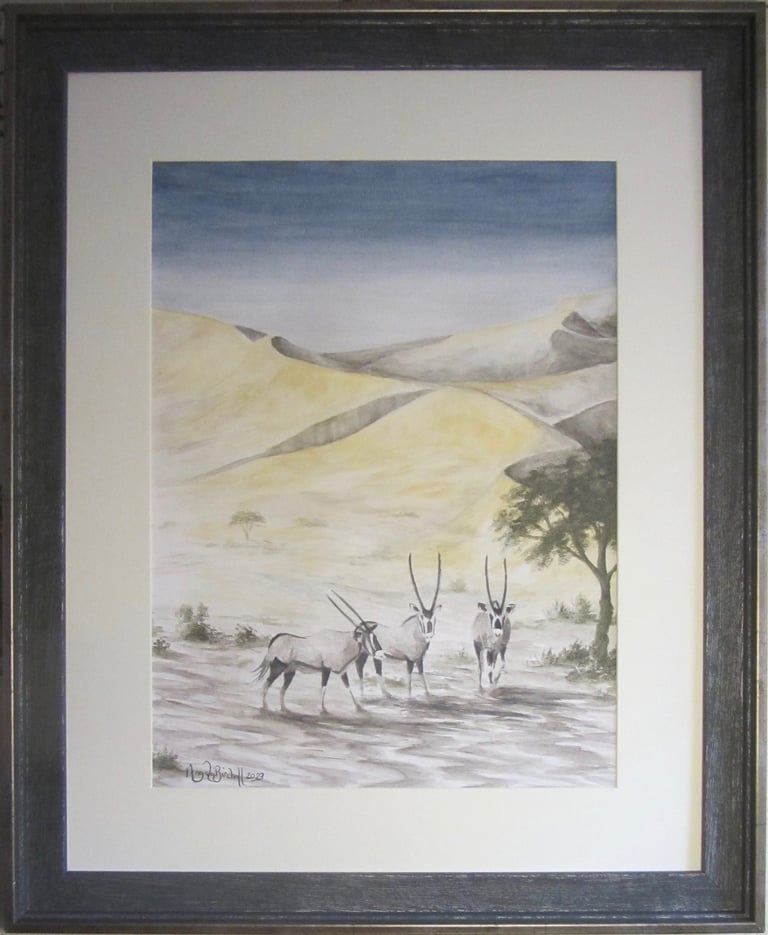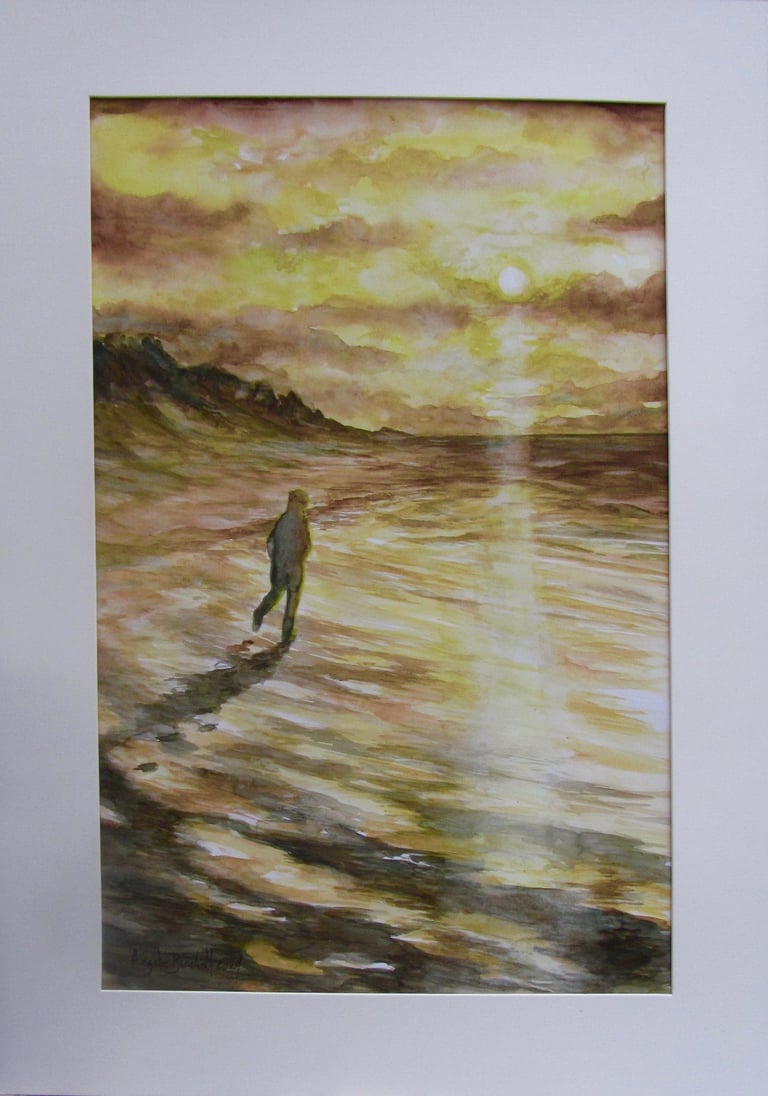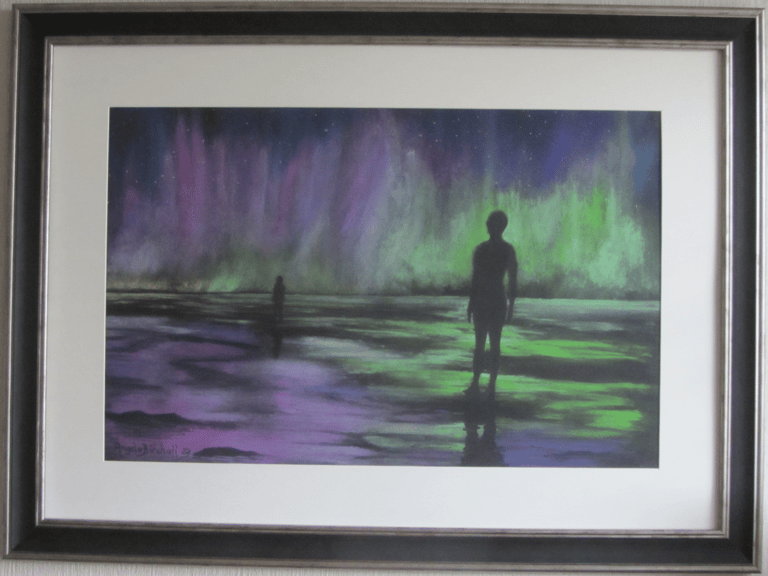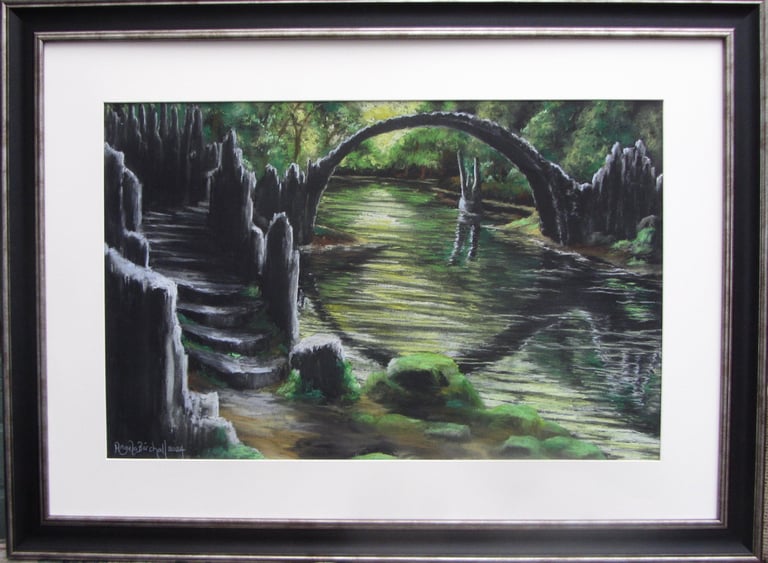Sunrise, sunset and the Devil's eye?
A quartet of my paintings and drawings are taking their place in the annual Sefton Open at The Atkinson gallery and, as different as they are in subject, they all show my love of capturing the atmospheric effects of light and shade . . .
Angela Birchall
3/21/20245 min read


This quartet of my paintings and drawings are taking their place in the annual Sefton Open at The Atkinson gallery and, as different as they are in subject, they all show my love of capturing the atmospheric effects of light and shade.
There’s the soft, subtle shades of sunrise, the warmer glow of sunset, the incredibly vivid colours of the Aurora Borealis, and the mystical effect that can be created with the palette of silver, lemon and green on black.
It harks back to my admiration for and adoration of two great artists, Leonardo and Monet, as well as the way I was taught 48 years ago about the importance of using light and shade to create a 3D impression on a 2D surface.
Both Leonardo and Monet spent years exploring the effects of light and how to capture it in whatever medium they were using. Leonardo was a maestro in the technique ‘chiaroscuro’ using darkest darks next to lightest lights to create form while Monet didn’t mind what he painted because the subject was only something on which light was falling and it was the light that was of supreme importance to him.


We start the quartet as we start the day with the painting of sunrise. This also references my childhood growing up in southern Africa as it features a trio of gemsbok in the Kalahari Desert. They are depicted at the point where the midnight blue sky dotted with twinkling stars is giving way to the first rays of the sun that will once again beat down on the scorched desert dunes.
The light effect at that part of the day was always intriguing to me because it gives the blues and shadows a cool, smoky grey quality which always seemed strange when the night sky had a crystal clear quality equally matched by the bright, blazing hot daytime sky that would take over.
I knew that the best way to capture this particular light effect was to use a range of tinted charcoal paints for the majority of the painting. However, to recreate the first tinges of warmth coming from the emerging sun as it strikes the tips of the tallest dunes, I needed to use the clear hues of watercolour paints.


At the other side of the day we get the warm sun starting to dip towards the horizon as I’m depicting in the watercolour painting “Sunset Stroll on Southport Sands”. It’s not only the opposite end of the day from the Gemsbok in the Kalahari painting, it’s located in Southport on the other side of the world, where I have lived most of the time since leaving Africa, and where the exhibition is taking place.
For much of the painting I have used the classic watercolour technique of ‘wet-on-wet’. This allows the colours to start to blend and merge in a soft, fluid way that is almost impossible to replicate in any other medium. Some sections, such as the solitary figure strolling across the sands, are painted in wet on dry which is used when you need to be more specific about details and want sharper edged lines.


The solitary figure in the sunset painting is echoed in the first of my two pastel drawings. This time it’s located a few miles further down the coast and the figures are the iconic statues created by Antony Gormley at what is now called “Another Place”.
In the winter months we are just leaving behind, it has fascinated me that the incredible Aurora Borealis were seen this far down the UK coastline. I have always wanted to see them so when they came to my part of the world I had to create a picture in tribute to them and thus “Northern Lights Shining in Another Place” came into being.
It is a pastel drawing on black paper with the vivid pastel colours in pinks, purples and greens creating the curtains of light flashing across the sky leaving the famous statues in complete silhouette and both the northern lights and the figures reflected in the pools of water lying on the beach.


I’m still drawing with pastels on black paper for my 4th picture: “Dare you cross the Devil’s Bridge?”.
The Devil’s Bridge is a fascinating structure in Rakotbrücke in Saxony in Germany and almost any way you look at it, the bridge and reflection form a complete circle.
It gets its name because when the structure was built in 1860 it seemed to defy all laws of engineering so there must some supernatural force holding it up. There are all sorts of myths and tall tales surrounding it including one where the engineer supervising the project was so worried about not finishing it on time he made a pact with the Devil. Legend has it that in exchange for completing the bridge in one night the Devil demanded the soul of the first person to cross the bridge.
To create that mystical quality that befits its legendary status, I used a palette of silver grey, mossy greens with lemon yellow and white on the black background. The play of light and shade leads you up the steps to the start of that very slim and precarious-looking bridge – hence the title asking you ‘Dare you cross the Devil’s Bridge?’ – while the reflection of the bridge completing the circle does remind me of an eye, so who’s watching?!
Before anyone tells me that the Devil’s Bridge is in Wales, there are Devil’s Bridges all over the place: a further 5 in Germany, some in Portugal, Slovenia, Spain, Switzerland, UK, Netherlands, Bulgaria, 14 recorded in Italy, and no fewer than 49 in France!
Back down to earth
Meanwhile, coming back down to earth, the annual showcase of the region’s artists, the Sefton Open, opens to the public on Saturday March 23rd and continues until Saturday May 4 at The Atkinson on Lord Street, Southport. Most of the works are on sale and The Atkinson offers the facility to buy artworks in instalments.
Get in touch
Use the message box to drop me a line if you want to:
purchase my paintings or drawings;
discuss commissioning me to create a unique work of art especially for you;
have a question to be answered in a future Picture Perfect blog post;
join one of my face-to-face painting or drawing classes in West Lancashire or have private coaching online;
discuss a bespoke staff development event using art to encourage teamwork and leadership
Contacts
0044 77242 00779
youcandrawandpaint@gmail.com

